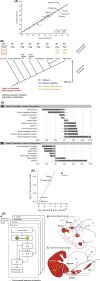Parkinson's disease: Is it a consequence of human brain evolution?
- PMID: 30759321
- PMCID: PMC6593760
- DOI: 10.1002/mds.27628
Parkinson's disease: Is it a consequence of human brain evolution?
Figures


References
MeSH terms
Grants and funding
LinkOut - more resources
Full Text Sources
Other Literature Sources
Medical

